The MO House is a project that explores the possibilities of generating complex architecture by combining simple elements. The results produced a nice surprise: the combination of a number of extremely simple spaces offered an extremely rich spatial experience.
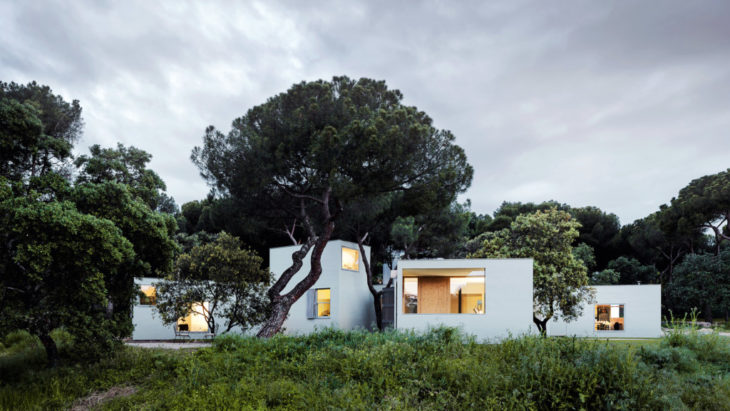
Image courtesy of Miguel de Guzmán
Systematic freedom
In 2010 we received a commission to design a single-family house in a forest in the outskirts of Madrid. Although the programmatic requirements were conventional, the site would demand a complex geometry. The powerful presence of the trees and the wish to have a house integrated in the woods led to a disaggregated solution. The program was transferred in a very direct and natural way to a number of simple rectangular pieces. The different topological relations between the pieces determined a series of useful solutions, 24 in the end. The optimal version was selected and the plan of the MO House was this way defined.
The MO House project belongs to a family of projects developed in the office beginning in 2005. These projects explore the possibilities of generating architectural complexity out of the combination of simple elements. Throughout this process of projects, conditioned by a large number of specifications settled by the clients, we have been forced to systematize every design decision in order to simplify the process to its full capacity. The results produce a nice surprise: the combination of a number of extremely simple spaces offer an extremely rich spatial experience. We have found a powerful tool to work with. We can use this system in very different situations. Some very simple basic rules and a series of pieces with adequate proportions will result in an endless range of solutions.
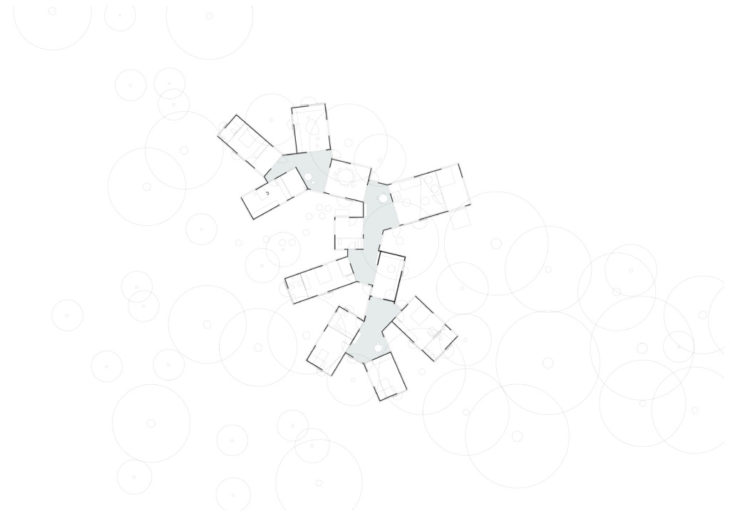
Ground Floor Plan
Wood in the woods. 72 mm thick walls. Slabs from 95 to 182 mm. The total weight of the structure would not reach one third of a conventional system. The foundations could therefore be made of galvanized steel micropiles only 2 meters long. The panels would be manufactured by numerical control cutting, ensuring accuracy at all angles.
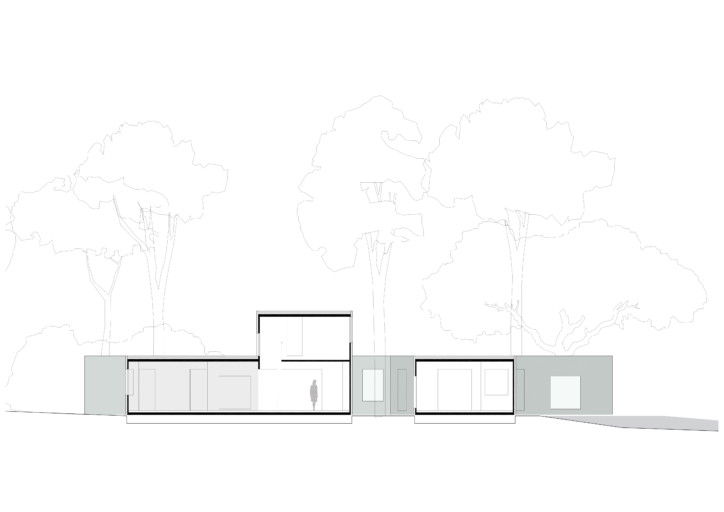
Cross Section
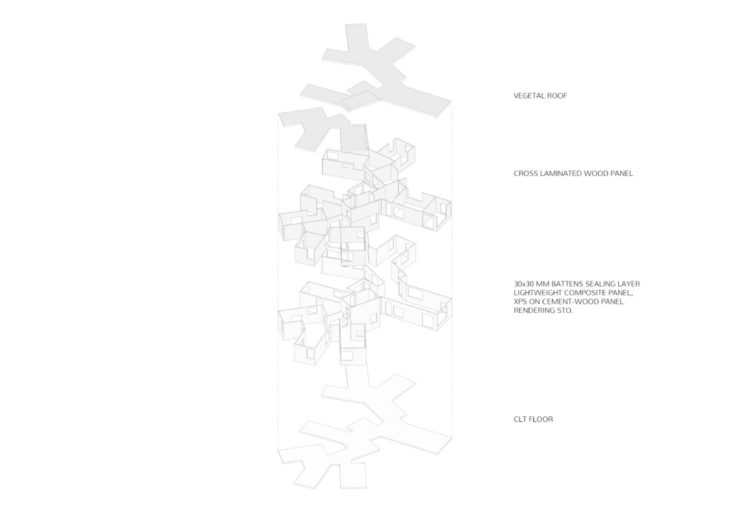
Disassembled 3D View of Building Components
The structure would be insulating, continuous, lightweight, precise and extremely thin. The floor of the house could be a direct transposition of the work scheme. The installation process would be fast and accurate. The nature of the project remained intact and its technical requirements had led us to the discovery of a new project matter.
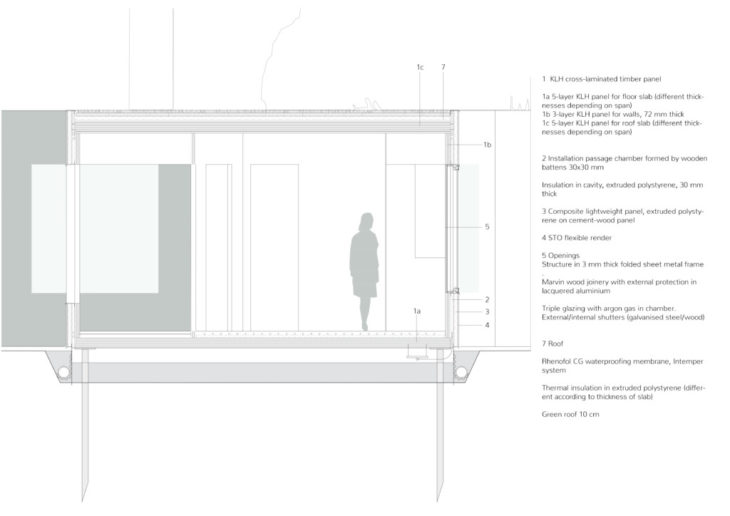
Constructive Detail of Roof, wall and Floor
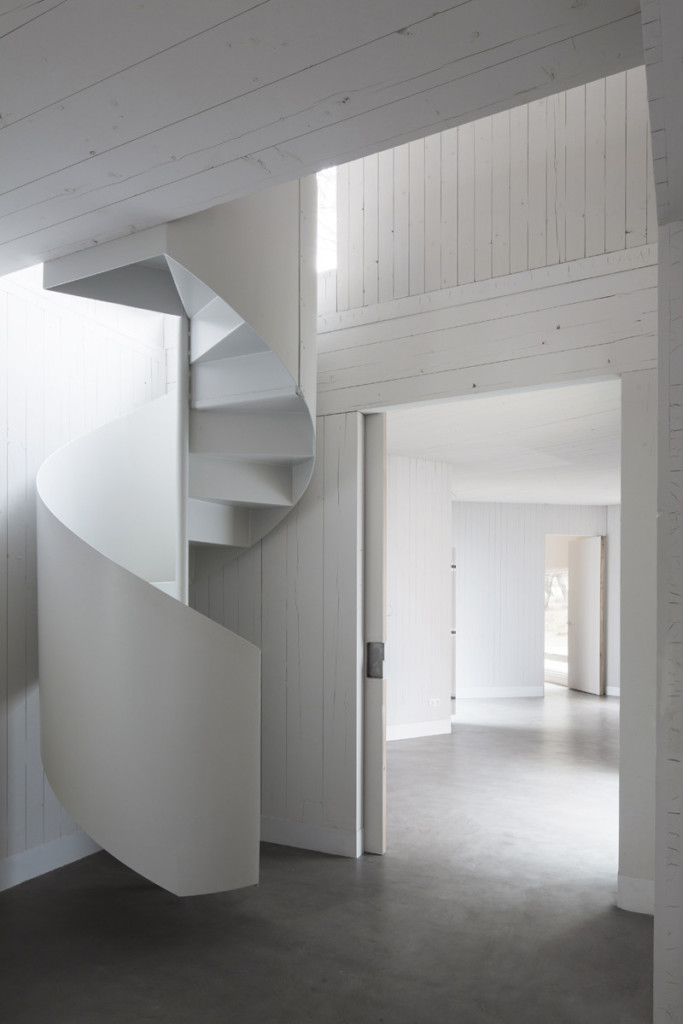
Interior Image, courtesy of Miguel de Guzmán
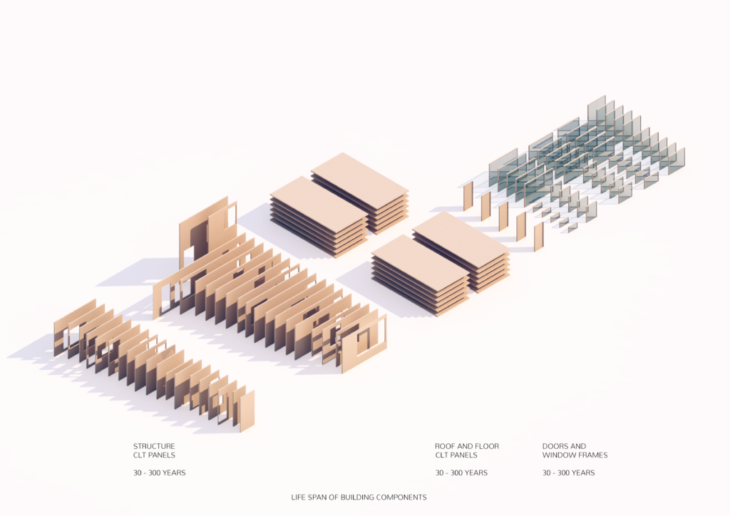
Life Span of Building Components
All the different pieces of this project account for around 320 m3 of wood that is around 234 trees of 30m height. It stores around 230 tons of CO2.
Case Study – MO House is a project of IAAC, Institute for Advanced Architecture of Catalonia developed at MMTD in 2021/2022 by student Ricardo Cruz Recalde. Faculty: Vicente Guallart. Course: MMTD01 – Cases